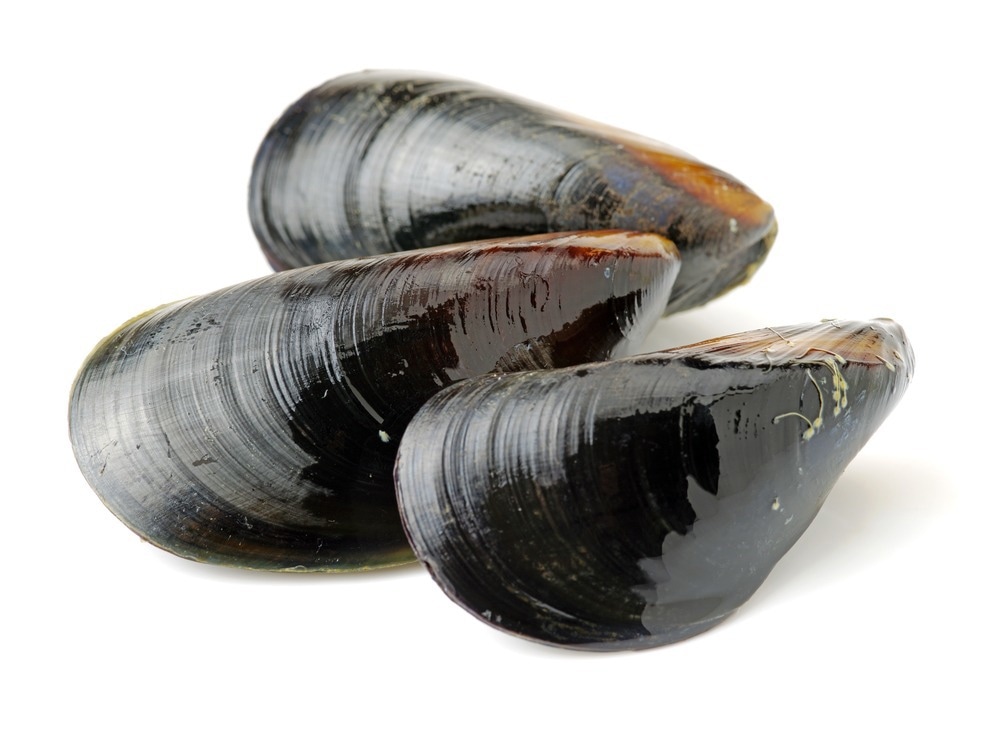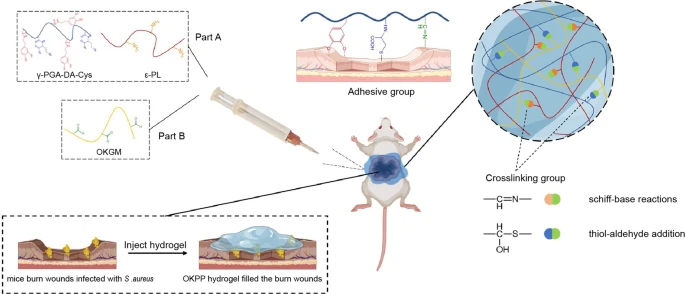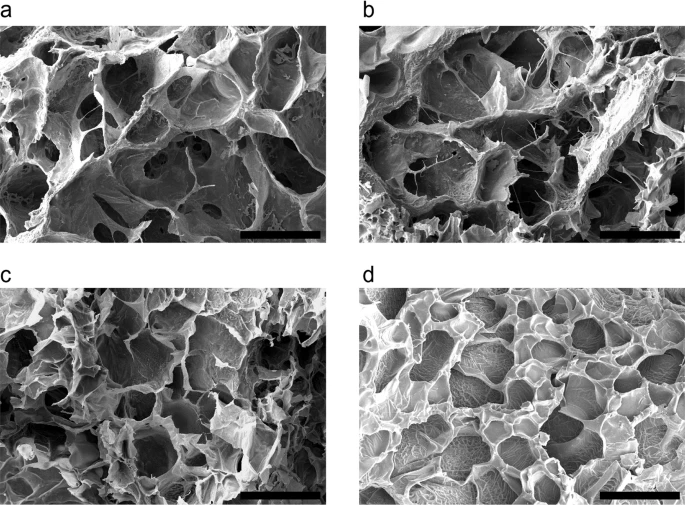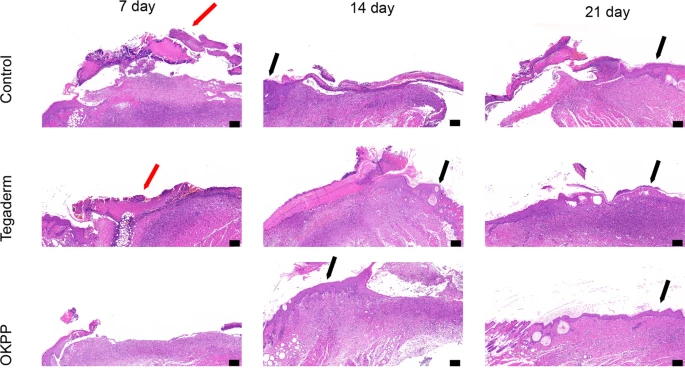 By Surbhi JainReviewed by Susha Cheriyedath, M.Sc.Nov 11 2022
By Surbhi JainReviewed by Susha Cheriyedath, M.Sc.Nov 11 2022In an article recently published in the open-access journal NPG Asia Materials, researchers discussed the acceleration of wound healing in burn wound infection by an injectable, mussel-inspired hydrogel with antibacterial and self-healing characteristics.

Study: Mussel-inspired hydrogel with injectable self-healing and antibacterial properties promotes wound healing in burn wound infection. Image Credit: JIANG HONGYAN/Shutterstock.com
Background
Skin integrity is destroyed by burning, opening the door to microbial infiltration and illness. As a result, burn wound infections harm patients' health. Skin transplantation, systemic antibiotic therapy, and wound dressing are the main treatments for burn wound infection. Antibiotic overuse, however, alters the ecology of several infectious diseases and increases the chance of bacteria that are resistant to antibiotics.
The majority of biological dressings used now to treat burns are constructed of hydrogels. However, several studies have shown that burn infection-related strong inflammatory responses and high oxidative stress may impede wound healing. Because of this, an injectable wound dressing must be developed that lowers inflammation and promotes self-healing.
A water-soluble polysaccharide called konjac glucomannan (KGM) can promote the growth of fibroblasts and has good biocompatibility. Natural antibacterial polypeptide ε-polylysine (ε-PL), which is frequently added to foods, has antibacterial action against both Gram-positive and Gram-negative bacteria, has good biosafety, and hinders the development of resistance in microorganisms. γ-poly(glutamic acid) (γ-PGA) is biocompatible and soluble in water. Additionally, as an alternative to the skin barrier, hydrogels containing γ-PGA have strong mechanical characteristics and sufficient mechanical strength to adhere to the changes in the outside environment. Therefore, the KGM, ε-PL, and γ-PGA utilized to make wound dressings have good potential for use in the treatment of skin that has been burned and become infected.

Schematic representation of OKPP hydrogel synthesis and treatment of burn wound infection. The schematic showed the composition of OKPP hydrogel and the origin of adhesion properties. The OKPP hydrogel was introduced into the wound with a double-barrel syringe gun. Image Credit: Sun, A et al., NPG Asia Materials
About the Study
In this study, the authors discussed the development of an OKGM/-PGA-DA-Cys/ε-PL (OKPP) hydrogel using oxidized konjac glucomannan (OKGM), ε-polylysine (ε-PL), and γ-PGA modified with dopamine and L-cysteine (γ-PGA-DA-Cys). This hydrogel could be injected and self-heals thanks to Schiff-base and thiol-aldehyde addition reactions that created it. According to the findings, the hydrogel had good in vitro antioxidant and antibacterial effects against Staphylococcus aureus and Pseudomonas aeruginosa. Additionally, the hydrogel showed strong adherence.
The team demonstrated that the hydrogel aided in the promotion of wound healing and the reduction of inflammation in a burn wound infection model. These findings illustrated the hydrogel's therapeutic potential as a burn wound dressing. The ability of the OKPP hydrogel to inject and self-heal could address the issue of prolonged use and gel breakdown.

Morphologies of the OKPP hydrogels. a OKPP1. b OKPP2. c OKPP3. d OKPP4. The scale bar is 150 μm. Image Credit: Sun, A et al., NPG Asia Materials
The researchers observed that the OKPP hydrogel could neutralize free radicals and had antioxidant characteristics. The OKPP hydrogel enhanced wound healing and decreased the generation of inflammatory factors in the burn wound infection model. The clinical potential of this hydrogel as a burn wound dressing was good.
Observations
The OKPP hydrogel could encourage angiogenesis, lessen wound inflammation, and speed up wound healing. The survival rate of NIH 3T3 cells was increased following pre-treatment with the OKPP3 hydrogel in comparison to the H2O2 treatment group. H2O2 was successfully shielded by the OKPP hydrogel. Over 90% of the cells in the hydrogels were still viable, in contrast to the control groups, which clearly showed cytotoxicity. OKPP1, OKPP3, OKPP2, and OKPP4 had bonding strengths of about 20.9 kPa, 18.3 kPa, 19.2 kPa, and 15.2 kPa, respectively. The bacterial load could be reduced by 103 times using the OKPP3 and OKPP4 hydrogels, and greater than 99% of Pseudomonas aeruginosa and S. aureus were eliminated. These findings demonstrated that the OKPP hydrogels had strong antibacterial activity.
The value of G′ rapidly decreased below zero when the OKPP hydrogels were under 300% strain. However, the G′ value could be restored to its initial value when the hydrogel applied 0.1% strain. OKPP1, OKPP3, OKPP2, and OKPP4 had pores that ranged in size from 90 to 150 μm. The lengthening of the ε-PL ratio caused a reduction in gelation time from 56 ± 6 to 24 ± 3 s. Two distinguishing bands were seen in the Fourier transform infrared (FTIR) spectrum of OKGM at 882 cm-1 and 1720 cm-1. The semiacetal structure between the aldehyde group and the neighboring hydroxyl group was responsible for the band near 890 cm-1. According to the hydroxylamine hydrochloride technique, OKGM had a 43.7% oxidation level.
By using Arnow's method, it was found that the dopamine content of γ-PGA-DA-Cys was 1.04 mmol/g, and the dopamine degree of substitution (DS) was 15.38%. Additional signals for γ-PGA-DA-Cys and γ-PGA-Cys were present at 3.4 ppm and 2.8 ppm, respectively.

H&E staining of wound tissue on days 7, 14, and 21. The red arrows show scar tissue. The black arrows show epithelial tissue. The scale bar is 200 μm. Image Credit: Sun, A et al., NPG Asia Materials
Conclusions
In conclusion, this study created an injectable hydrogel having antioxidant and antibacterial properties. The prepared hydrogel had a speedy and controlled gelation process and demonstrated good wound healing. In addition to having some antioxidant and adhesion capabilities, the hydrogel also exhibited good antibacterial activity. It demonstrated potent antibacterial activity, could effectively reduce inflammation in in vivo full-thickness burn infection models, and encouraged wound regeneration. These findings demonstrated the potential of this hydrogel as a bandage for wounds.
The authors mentioned that the adhesion, antibacterial, and antioxidant properties of the proposed hydrogel would be further improved and assessed. They also stated that they would create further possible biomedical uses for this hydrogel.
References
Sun, A., Hu, D., He, X., et al. Mussel-inspired hydrogel with injectable self-healing and antibacterial properties promotes wound healing in burn wound infection. NPG Asia Materials, 14, 86 (2022). https://www.nature.com/articles/s41427-022-00434-z
Disclaimer: The views expressed here are those of the author expressed in their private capacity and do not necessarily represent the views of AZoM.com Limited T/A AZoNetwork the owner and operator of this website. This disclaimer forms part of the Terms and conditions of use of this website.